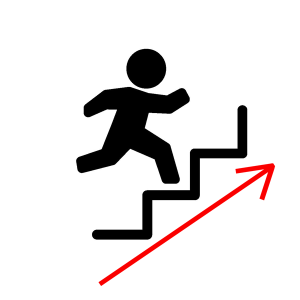
I think kendo has three phases of human development and these phases are really similar or the same as our human development in the society.
You are Selfish!!
The first phase is a selfish phase. When you start kendo you have to learn rules, etiquettes and the basics. You learn solo movements without any partners and you move on to a pair work. And finally, you will start hitting other students in bōgu.
You do everything you have learned and execute strikes on people in bōgu. And there’s one thing that you don’t know.
You Strike HARD!!
Quite often you are striking very hard. You don’t know how painful it is to receive your strikes.
People who are receiving your strikes don’t tell you that you are striking them very hard.
That is because we know everyone strikes very hard at the very beginning. And gradually we will fix you so you don’t strike too hard.
But in the next phase you will realize that you have to do something about it.
Feel How Others Feel
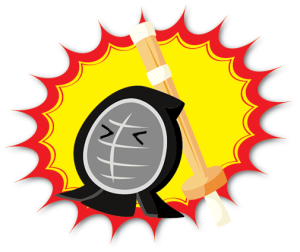
The second phase is to put yourself in receiver’s shoes. Now you put your own armor on.
It’s time for you to receive strikes on your head (men), on your right wrist (kote) and on your waist (dō).
Now you know how painful it is. You probably thought that these protections would protect you from the impact of these strikes.
They said it would not hurt!!
Well, it is true that the armor protects you but you still feel pain.
At this point, many beginners blame strikers, “They are striking too hard!” Actually they are not striking too hard.
This is the moment that you should realize YOUR strikes have been giving the receivers pains too. And it is probably more painful that you have felt when received for the first time.
So you know now. It hurts. And I want you to know that “our improvement is based upon the pains that we give to receivers”. And that is why we should appreciate our receivers for taking pains for our progress.
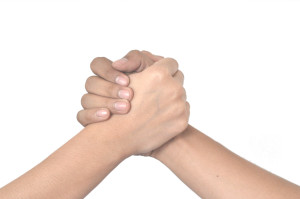
So Giving Pains To Receivers Are OK?
Well, it is OK at the beginning. But as you progress, you should know how to strike without putting unnecessary strength in your strikes. You should learn proper tenouchi. Proper tenouchi will remove unnecessary strength and make your strikes sharper.
If you have unnecessary strength in your strike, say striking the right kote, it gives pain right into the bones. If striking men, it feels like someone hits you with a fat dictionary right in the head.
Who wants to get that all that time???
So everyone should strive to learn good tenouchi if you want to improve quickly and that will prevent you from hurting your kendō friends!!
So the teachings of this phase is…
“Put yourself in other’s shoes. Learn perspectives of both sides. Before blaming others, step back and think if you are doing the same thing”.
Help Each Other!
The third phase is to realize that kendō is a team work. This is a very hard for many to realize right away. It is because we do not fight as a team like baseball or basketball. We have a team fight but the match is always one on one.
But when training kendō, you cannot possibly train on your own. Sure, you can do many things alone but without a training partner, we do not know how your techniques work on others and also you cannot know how the state of your mind changes during a fight.
It sounds like that we need only one partner to train kendō. Well, that is just to train techniques.
A Variety of Techniques on Variety of People
Even you and your mates learn from the same teacher, your kendō and your mates’ kendō will be different. Just like every single human is different.
So by training with different types of kendō, you can learn what to do against certain types of kendō.
This will force you to learn many different techniques and many different ways to deal with them.
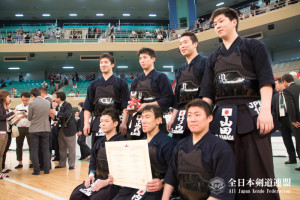
They’ll Help You. You Help Them.
There is a time that the whole group becomes one during training. When do you think that is?
When receiving a very tough and hard training.
You cannot possibly push through this hard training alone. The reason is very simple. It is too hard for you to go through alone.
You kendō mates are trying hard around you. Some might be crying and some might be barely stranding. But they are trying to push through the hardest time of the training.
You feel the energy around you. You feel the spirit of “never-give-up”. You just cannot stop because you are “tired”.
Special Training ONLY for You?
Sometimes you might be the only person receiving very hard training. You want to quit and walk away. But you know you cannot do it. Then you hear chanting around you…
“Go! Keep Striking! Com’on! Let’s go!!!”
The whole dōjō is cheering you. Just you. Your kendō mates are also tired but they are squeezing their energy out to cheer you.
Appreciate that. Don’t think, “Why only me?”.
They cannot do it for you but they know how hard it is. They know how hard training is. So they cheer you from the bottom of their heart.
Now you do the same for them. So they can push through their hard training. They will appreciate you.
This will build great team work for your dōjō. And you realize that even though we live alone we are always helped by others to keep going.
Yes, we are the ones who decide what we do with our lives. But others will be there to help you directly or indirectly. They might not be able to do it for you like our kendō training, but they are there for you to cheer you.
I think these are three phases of human development we can gain through kendō.

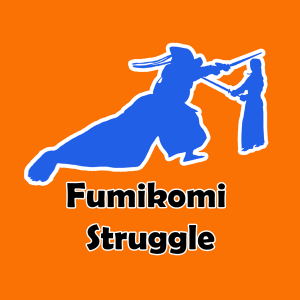

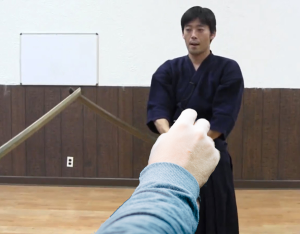
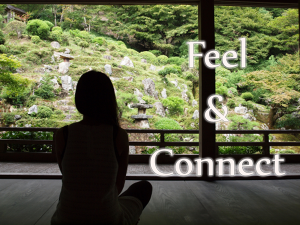
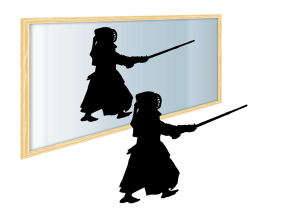
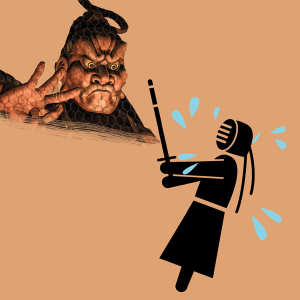
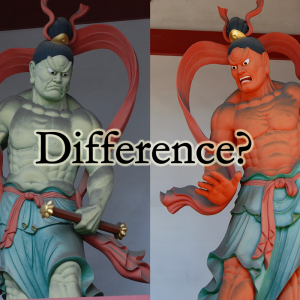

 Kamiizumi Isenokami Nobutsuna
Kamiizumi Isenokami Nobutsuna